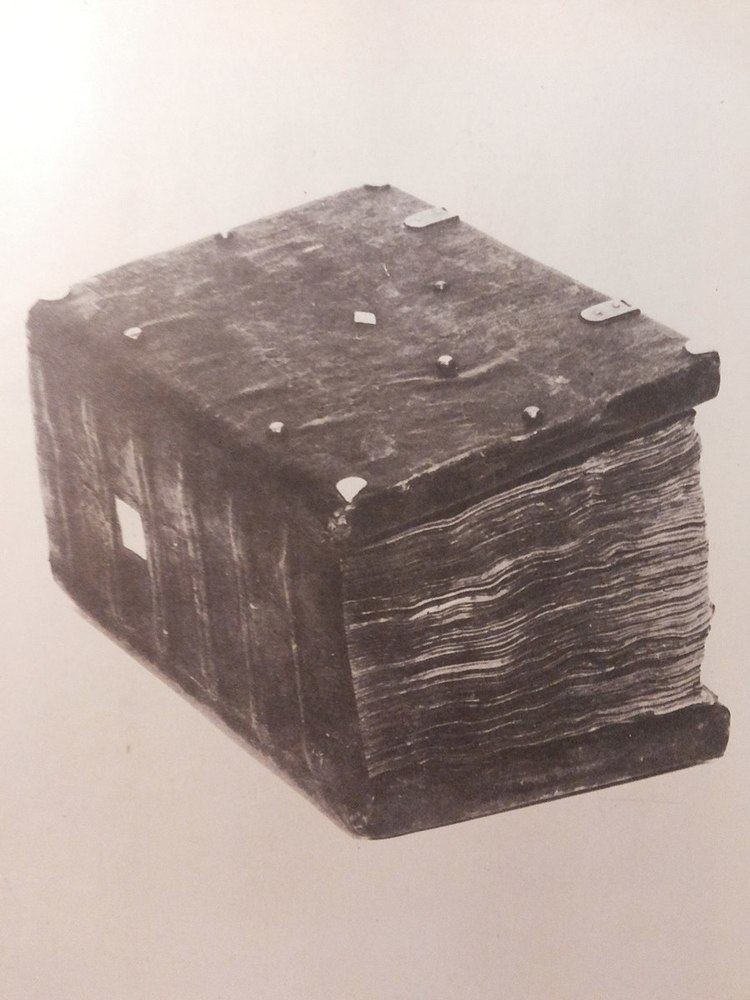 | ||
Created from the beginning of the 12th century. Author(s) Similar Kormchaia, Russkaya Pravda, Stoglav, Sermon on Law and Grace, Primary Chronicle | ||
Church Statute of Prince Volodimir (modern writing: Vladimir; Russian: Церковный Устав князя Владимира) is a source of church law in Old Rus', defined legal authority of church and legal status of clergy by the state: prince (knyaz) and his administration. Vladimir's Statute was a short legal code, regulated relationship between the church and the state, including demarcation of jurisdiction between church and princely courts, and defined index of persons and organizations within the church jurisdiction. The church also got under its supervision the system of weights and measures, and monthly support: tithe from all princely income. The statute was written at the beginning of the 12th century and remaked during many centuries. The statute was written in Old Church Slavonic and Old Russian. It was one of the first church sources of Old Russian Law. Church Statute of Prince Yaroslav and other Old Russian princely statutes served to closely purposes. One of the sources of the statute was Byzantine law, including Nomocanon.
Contents
- History and meaning
- Copies
- Collection of Church Statutes and Charters
- Some editions
- Some literature
- References
The statute was written on behalf of Kievan prince (and the prince of all Rus') "Vasilii, called Volodimir, son of Sviatoslav <...> having consulted with my Princess Anna and with my children".
History and meaning
Evgeniy (Bolkhovitinov), Konstantin Nevolin, Makariy (Bulgakov), Vasily Klyuchevsky, Vladimir Beneshevich, Aleksandr Lototskiy, George Vernadsky and Mikhail Tikhomirov considered that the statute went back to Pre-Mongol Period (before the first half of the 13th century). Serafim Yushkov, Aleksandr Zimin and Yaroslav Schapov referred the archetype of the statute to the beginning or to the first half of the 12th century. Nikolay Karamzin, Yevgeny Golubinsky attributed the basis of the statute to the 13th century. Altksey Pavlov - to the 14th century. Serafim Yushkov considered that the basis was a short "confirmative" charter (gramota) by prince Vladimir Svyatoslavich (the end of the 10th - the beginning of the 11th centuries), authorized use of church law and defined size of jurisdiction of Russian church. Yushkov reconstructed this charter: a part of the lawsuits were passed from prince, boyars and their judges to the church and the bishops. According to Yushkov the protograph of the first and second redactions was formed at the beginning of the 12th century, also reconstructed by the scholar.
Statute of Vladimir has a wide distribution in Old Russia and was known outside. Development of the statute redactions reflexes evolution of Old Russian church law and relationship between church and prince during centuries.
Copies
The original isn't survived. The statute is survived in more than 200 copies from 13th to 19th centuries united in seven redactions. This copies are a part of various Old Russian collections of laws, including Kormchiye. The oldest surviving copy of the statute is contained in Synodic Kormchaia of 1282 (Novgorod).
Collection of Church Statutes and Charters
Some copies of the statute are often a part of the Collection of Church Statutes and Charters, including church statutes of prince Vladimir and prince Yaroslav, the Rule on Church People and the Rule of 165 Saint Fathers. The Collection concludes with Confirmative Charter of 1402 by Vasily Dmitrievich, Grand Prince of Moscow, and Cyprian, Metropolitan of Moscow, mentioning about Vladimir's Statute (the Charter confirmed rights and privileges, given to church by princes Vladimir and Yaroslav, and metropolitans). Thus the Statute of Vladimir could be applied up to the 15th century in Grand Duchy of Moscow and it could be later.
